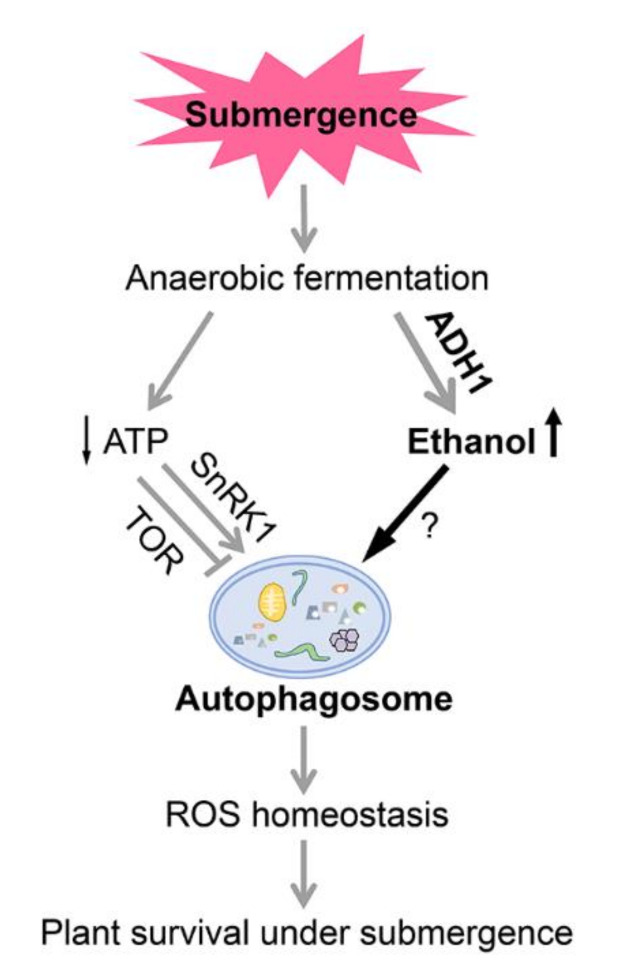Figure 6.
Proposed model for the role of ethanol-induced autophagy in regulating plant responses to submergence. Submergence causes hypoxia, which leads to deficiencies in cellular energy and carbohydrate shortages in plants. To survive hypoxic stress, plant cells switch from aerobic respiration to anaerobic fermentation, especially ethanolic fermentation. In this context, ADH1 (alcohol dehydrogenase1) activity increases rapidly in plant cells, resulting in the accumulation of ethanol. The increased ethanol levels promote autophagosome formation, which modulates hypoxia responses and facilitates plant survival by regulating ROS homeostasis, although the precise mechanism remains to be elucidated. By contrast, anaerobic fermentation produces much less ATP than aerobic respiration. The TOR (target of rapamycin) pathway and SnRK1 (Snf1-related protein kinase 1) play opposite roles in regulating autophagy in response to energy limitation. The energy sensor SnRK1 is activated under hypoxia stress and acts as a positive regulator of autophagy, whereas the negative effect of the TOR pathway on autophagy is repressed, ultimately improving plant survival following submergence.

